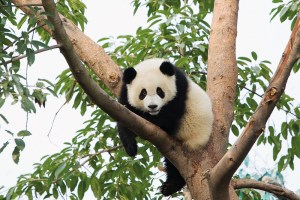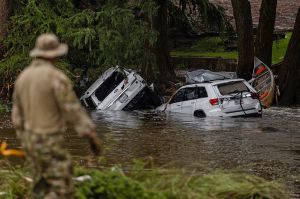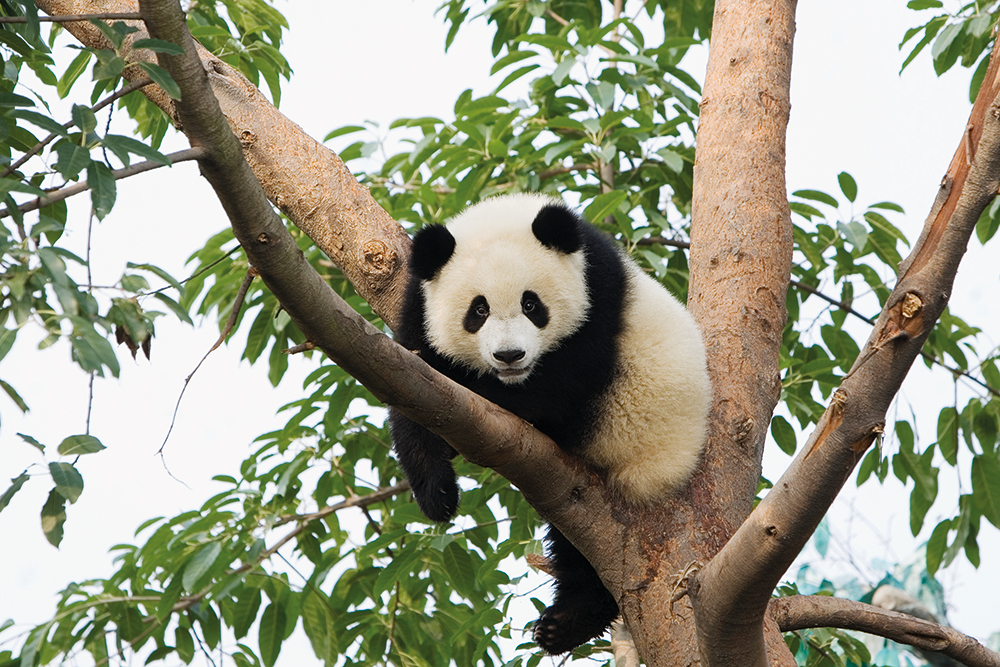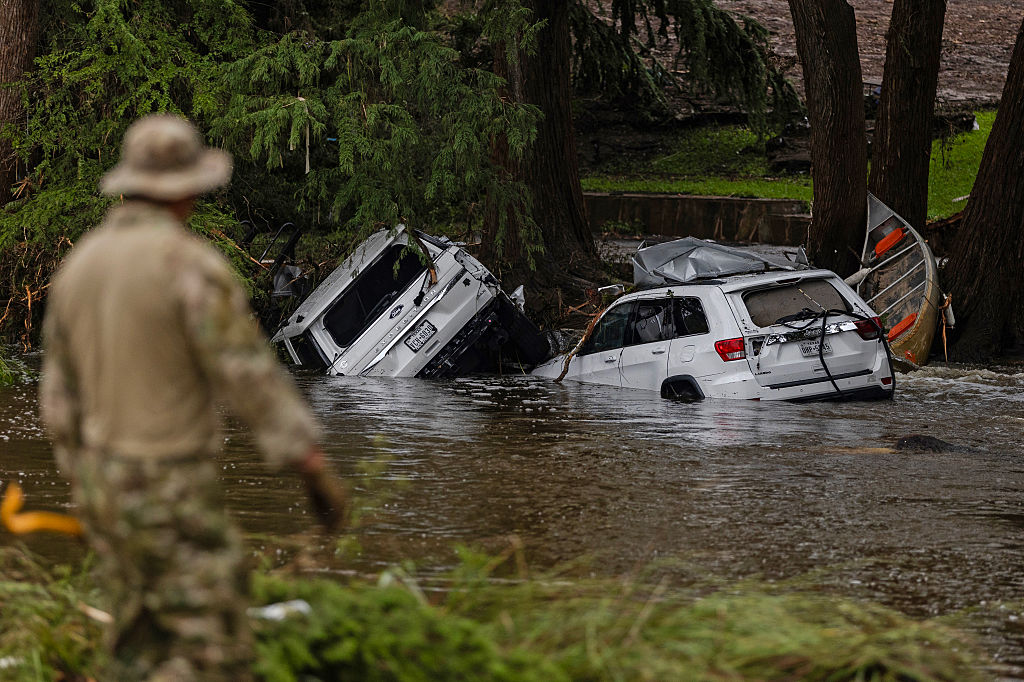With a laboratory leak in Wuhan looking more and more likely as the source of the Covid pandemic, the Chinese authorities are not the only ones dismayed. Western environmentalists had been hoping to turn the pandemic into a fable about humankind’s brutal rape of Gaia. Even if “wet” wildlife markets and smuggled pangolins were exonerated in this case, they argued, and the outbreak came from some direct contact with bats, the moral lesson was ecological. Deforestation and climate change had left infected bats stressed and with nowhere to go but towns. Or had driven desperate people into bat-infested caves in search of food or profit.
Green grandees were in no doubt of this moral lesson. “Nature is sending us a message. We have pushed nature into a corner, encroached on ecosystems,” said Inger Andersen, head of the United Nations Environment Program. The pandemic was “a reminder of the intimate and delicate relationship between people and planet,” said the director-general of the World Health Organization, Tedros Adhanom Ghebreyesus. “God always forgives, we forgive sometimes, but nature never forgives,” added Pope Francis, enigmatically. “Climate change is a threat multiplier for pandemic diseases, and zoonotic diseases,” said John Kerry, a few months before taking up the baton as US special envoy for climate. Covid-19 was “the product of an imbalance in man’s relationship with the natural world,” said British prime minister Boris Johnson. “Mother Nature… gave us fire and floods, she tried to warn us but in the end she took back control,” tweeted Sarah, Duchess of York.
In July 2020, seventeen scientists, including Dr. Peter Daszak of New York’s EcoHealth Alliance, who had funded and collaborated with the Wuhan Institute of Virology and was keen to exonerate his friends there, wrote an article in Science magazine insisting that the main lesson of the pandemic was that deforestation must cease: “The clear link between deforestation and virus emergence suggests that a major effort to retain intact forest cover would have a large return on investment even if its only benefit was to reduce virus emergence events.’”
There were three problems with this argument. First, there is no “clear link” between epidemics and deforestation. AIDS, SARS, MERS, Ebola, Nipah, Hendra, Zika — none of these virus outbreaks has been plausibly linked to forest clearance, let alone demonstrated to have been caused by it. Second, deforestation has not only ceased in southern China but went into rapid reverse a generation ago. There is more forest every year. Third, people encounter bats less, not more, than they did in the past. Urbanization has drained rural villages of people and given them other ways of making a living than cutting trees or catching bats.
The deforestation statistics are startling to anybody who listens only to green activists. In 2018 a team from the University of Maryland concluded: “We show that contrary to the prevailing view that forest area has declined globally — tree cover has increased by 2.24 million km².” That’s 7 percent more forest globally than in 1982. New forests have been planted and old ones have regenerated naturally, as the footprint of farming shrinks thanks to better yields.
There is another factor at work too. All the world’s ecosystems have been getting greener for more than thirty-five years; in that time the planet has experienced “an increase in leaves on plants and trees equivalent in area to two times the continental United States,” as NASA puts it. Why? Because of carbon dioxide emissions. Plants grow faster, and need less rainfall, when carbon dioxide levels in the air are higher. CO2 is plant food. (That is one reason that during the last Ice Age, when CO2 levels fell very low, deserts expanded dramatically and vast dust storms swept the globe.)
True, much of the forest recovery has been in Europe and North America, whereas some tropical rainforests have continued to shrink because of logging. But even some of those forests are now expanding. Countries like Bangladesh have been rapidly increasing their tree cover. As for China, it is reforesting as fast as anywhere on the planet. “China alone accounts for 25 percent of the global net increase in leaf area with only 6.6 percent of global vegetated area,” reports a team from Boston University in Nature magazine. The increases are especially marked in southern China, they find: the very area where Covid-19’s bat-infecting relatives live.
Climate scientists are nothing if not flexible, so a study by Cambridge University earlier this year purported to blame the pandemic not on the usual suspect — decrease in vegetation stressing bats — but on the opposite: an increase in vegetation leading to a greater diversity of bats in southern China. This is because the data show that the climate there is very slightly warmer in winter (though not in summer) and wetter in summer than it was a century ago. The only problem with this study, I was astonished to find when I read it carefully, was that it used models to estimate the impact both of climate change on vegetation and of vegetation changes on bat diversity, rather than actual data. It was models all the way down. This did not stop the media reporting the results as if they were facts. But note that the argument was the very opposite of the green grandees’ one: industrial emissions have made southern China more hospitable to bats.
The truth is that human beings did, and still do, a lot more encroaching on nature when they’re poor and using preindustrial technology. Bushmeat — monkeys, rodents and other animals sold in markets, mainly in Africa — is a trade restricted to poor countries. In richer ones people prefer to buy poultry and pork from shops. Go farther back and the massive extinctions of the Pleistocene megafauna (moas, mammoths, giant sloths, giant kangaroos, etc.) in North and South America, Australia, Madagascar and New Zealand were achieved by people with stone axes and bows and arrows. We Europeans “encroached” on our last woolly rhinoceroses long before we invented the wheel, let alone the budget airline.
As for bats, they have moved into our houses because eaves make good roosts, not because we’ve driven them to it. But the bats that carry SARS and SARS-CoV-2 are horseshoe bats, which generally stick to natural caves. Anybody who thinks that visiting caves is a novel human habit has not been paying attention. Cavemen — the clue is in the name — were encountering bat roosts for hundreds of thousands of years. As the archaeologist Professor Timothy Taylor of Comenius University in Bratislava put it to me: “Prehistoric human beings have been almost everywhere before us. Perhaps not to the top of Everest or to Antarctica, but certainly underground wherever they could: out of curiosity; for rituals; for potting clay; for lithic resources; and, increasingly after around 5000 BC, to locate and exploit metal ores. In China and southeast Asia this becomes intensive after about 3000 BC.”
So if going into a cave were all it took to start a coronavirus pandemic, the odds are it would have happened eons ago. There are, however, three new reasons that people go into caves today: tourism, collecting bat guano and science. The abandoned copper mine in Yunnan where the closest relative of SARS-CoV-2 was found is an unnatural, man-made tunnel, not an example of pristine nature. After guano-shoveling miners got ill there in 2012, the only visitors to the site, as far as we can tell, were scientists, mostly from the Wuhan Institute of Virology, more than 1,000 miles away. They not only went into the mine, disturbing the bats; they also captured them in nets, swabbed their rear ends for viruses and took them back to Wuhan labs. Now that’s encroachment.
This article was originally published in The Spectator’s UK magazine. Subscribe to the World edition here.

























